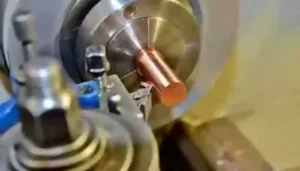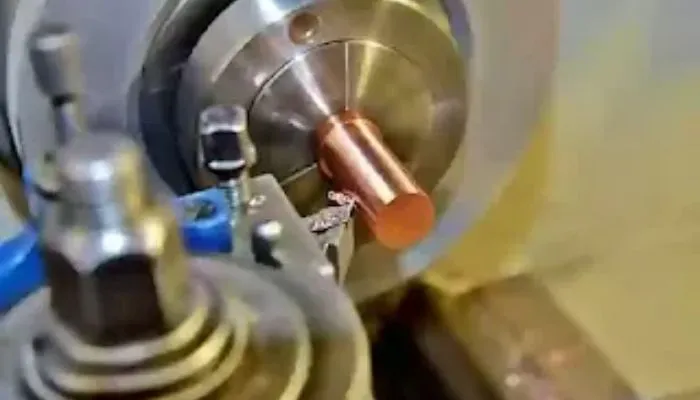The lathe machine is a versatile tool commonly used in machining processes across various industries. Its ability to shape and manipulate materials makes it indispensable in manufacturing, repair, and production settings. Understanding the different operations that can be performed on a lathe machine and their respective functions is essential for maximizing its capabilities. In this comprehensive guide, we’ll delve into the various operations of a lathe machine and explore their functions in detail.
Turning Operation
Function: Turning is the fundamental operation of a lathe machine, where the workpiece is rotated while a cutting tool removes material to create cylindrical shapes. This operation is used to produce shafts, rods, and other components with uniform diameters.

Process: During turning, the cutting tool is fed parallel to the axis of rotation, resulting in material removal and the formation of the desired shape. The lathe machine’s spindle speed and feed rate can be adjusted to control the cutting process and achieve the desired surface finish.
Facing Operation
Function: Facing involves machining the end of a workpiece to create a smooth, flat surface perpendicular to its axis. This operation is commonly used to square off the ends of cylindrical parts and ensure proper alignment for subsequent machining operations.
Process: In facing, the cutting tool moves radially inward towards the end of the workpiece, removing material to achieve the desired surface finish. The lathe machine’s cross-slide and compound rest are adjusted to control the depth of cut and achieve precise facing results.
Taper Turning Operation
Function: Taper turning is used to produce tapered surfaces on cylindrical workpieces, such as cones or tapered shafts. This operation is essential for creating components with varying diameters or angles.
Process: Taper turning involves adjusting the angle of the lathe machine’s compound rest relative to the workpiece axis. As the workpiece rotates, the cutting tool is fed along the tapered path, gradually removing material to achieve the desired taper angle.
Drilling Operation
Function: The drilling operation on a lathe machine involves creating holes in the workpiece using a rotating drill bit. This operation is used to produce holes for fasteners, dowel pins, or other components.
Process: During drilling, the workpiece is secured in the lathe machine’s chuck or collet, and the drill bit is mounted in the tailstock or tool post. As the lathe spindle rotates, the drill bit is fed into the workpiece to create the desired hole diameter and depth.
Boring Operation
Function: Boring is used to enlarge or refine existing holes in a workpiece to achieve precise dimensions or improve surface finish. This operation is essential for achieving tight tolerances and precise fits in machined components
Process: Boring involves mounting a boring bar or tool holder in the lathe machine’s tool post and adjusting its position relative to the workpiece. The boring tool is then fed into the existing hole, removing material to achieve the desired diameter and finish.
Thread Cutting Operation
Function: Thread cutting on a lathe machine involves machining external or internal threads on a workpiece to facilitate assembly with mating components. This operation is used to produce threaded bolts, nuts, and other threaded parts.
Process: Thread cutting can be performed using a single-point cutting tool or a threading die mounted on the lathe machine’s spindle. The lathe machine’s lead screw or thread dial is used to synchronize the cutting tool with the desired thread pitch, ensuring accurate thread profiles.
Conclusion:
The lathe machine offers a wide range of operations, each with its specific functions and applications. By understanding these operations and their processes, machinists can effectively utilize the capabilities of the lathe machine to produce high-quality machined components. Whether it’s turning, facing, taper turning, drilling, boring, or thread cutting, the versatility of the lathe machine makes it an indispensable tool in modern manufacturing and machining operations.
